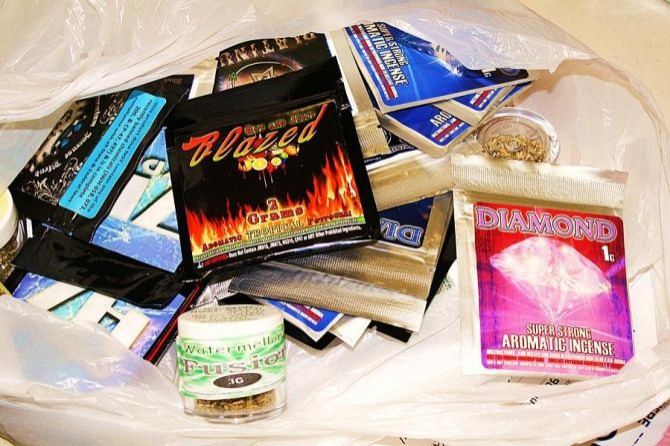Synthetic Marijuana Sending More Teens to the ER with "Unusual Side Effects"

Synthetic marijuana drugs, sold under street names like “Spice,” “K2,” “Mr. Smiley,” “Red X Dawn,” and “Blaze,” are becoming increasingly popular among teens and young adults in the United States, even though many users of these alternative compounds are ending up in the hospital after smoking or eating these products, according to a report published on Monday.
When smoked or eaten, these drugs produce a high that is similar to marijuana, and before the Drug Enforcement Administration listed 5 chemicals used to make synthetic marijuana as schedule 1 controlled substances on March 1, 2011, these herbs and spices were commonly found in gas stations and convenience stores, but they are still sold on the Internet.
These chemicals "have not been approved by the FDA for human consumption, and there is no oversight of the manufacturing process," the DEA wrote in a statement.
Investigators in the latest report about synthetic marijuana said that these products can cause agitation, aggressive behavior, catatonia, intense sweating, and trouble speaking, and they noted that the American Association of Poison Control Centers reported 4,500 calls involving them since 2010.
Their report, published in the journal Pediatrics, details three cases studies of adolescents seen in the emergency department (ED) with suspected synthetic cannabinoid intoxication and documents typical signs and symptoms of intoxication with these products.
"When we suspected the use of synthetic marijuana in these patients, we soon realized that there is little information about this drug in the medical literature," Dr. Joanna Cohen, lead author and associate professor of pediatric emergency medicine at Children's National Medical Center, said in a statement.
"It's important for providers and parents to recognize the signs of drug use and to try and prevent repeat use," Cohen told ABC News. "The effects on developing brains can be severe."
One of the cases involved a 16-year-old girl transferred from an outside hospital who was reportedly smoking marijuana containing K2. Doctors said that she was unresponsive when she arrived at the ED and that she had an abnormally high heart rate.
Her eyes were open but she was unable to move her lips to speak, but after being given a dose of intravenous (IV) diphenhydramine and two of lorazepam, she slowly recovered her motor and verbal functions and was discharged.
Another case was of an 18-year-old boy who was brought to the ED after he became agitated and was sweating profusely at a party. Doctors reported that he was uncooperative, restless, and aggressive, and he like the 16-year-old girl also had an abnormally high heart rate. After he was given a dose of lorazepam, he admitted to smoking Spice at a party. Doctors gave him a dose of diphenhydramine IV and over the next several hours he recovered and was discharged.
The last case detailed a previously healthy 16-year-old boy who was part of a group home. He was brought to the ED by his case worker when she noticed that his face appeared to be “frozen” and he had slow speech. The case worker reported that he was agitated and appeared to be hallucinating, and may have smoked Spice 5 hours before. Doctors reported that he was agitated, having troubles with speech and appeared to be having abnormal or involuntary movements. While he seemed alert and could answer simple questions, he seemed confused. They gave him a dose of saline bolus and lorazepam, and afterwards he was discharged when he recovered.
Researchers noted that the dystonic reactions seen in 2 of the cases are "unusual side effects," and that the dystonia observed could be a combination of catatonia and catalepsy combined with agitation.
Researchers said that there is no cure for synthetic cannabinoid intoxication, and while symptoms are short-lived and limited "the potential for multiple long-term effects, including immunomodulation and carcinogenicity, memory loss, psychiatric complications, and dependence, have been described," the authors wrote.
"Given the sensitivity of the developing brain and association between early cannabis use and psychosis, adolescent use of these new synthetic cannabinoids is particularly concerning," researchers added.
They say that understanding and recognizing the signs and symptoms of patients with synthetic cannabinoid ingestion can help better prepare doctors to diagnose and manage patients presenting the documented symptoms.
Experts said that these hazardous drugs are hard to detect in drug tests, and that it is worrying that these products, often marketed as herbal incense, are readily available online for as little as $9 a gram.
“The truth is these products are a guise for a very scary and potent drug. We know from our members across the country that K2 and Spice are sending kids to the emergency room, causing aggressive and unusual behavior, and even suicides,” Arthur Dean, chairman and CEO of Community Anti-Drug Coalitions of America, who was not involved in the study, told WebMD.



























